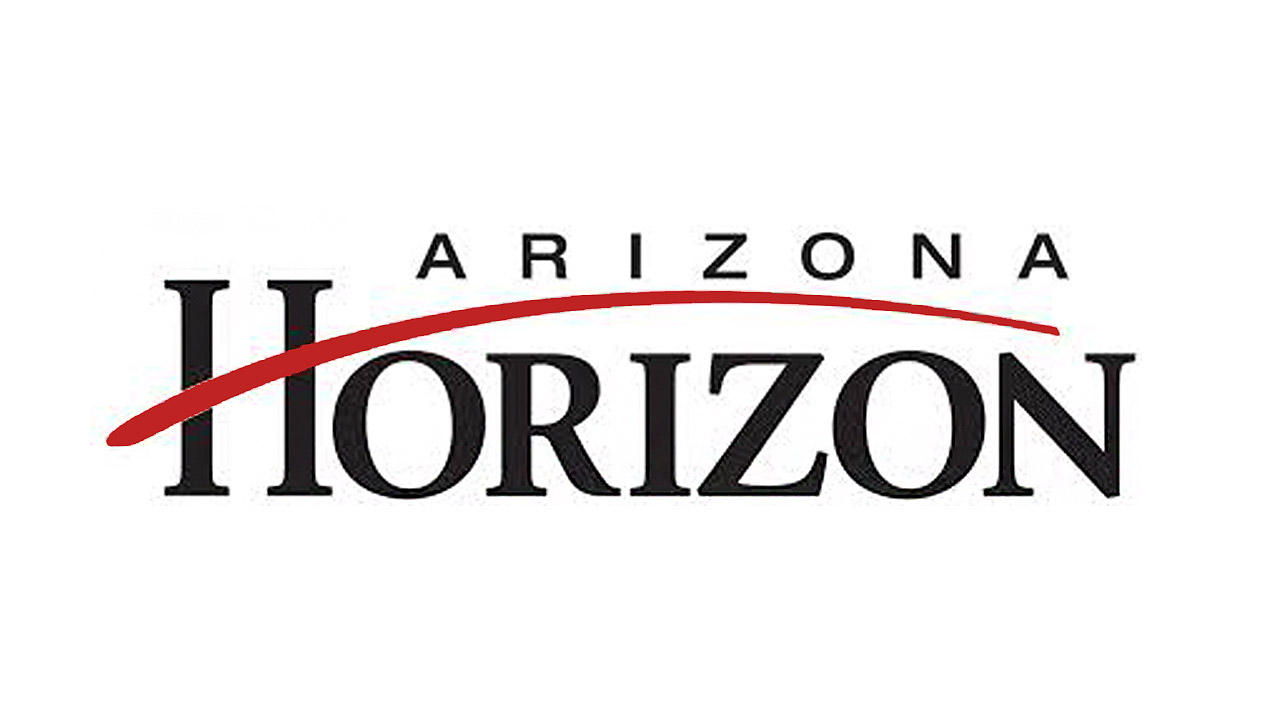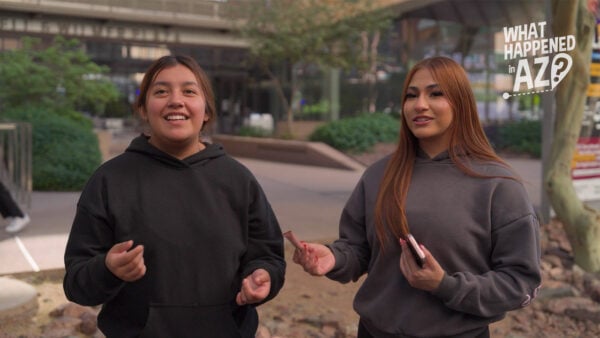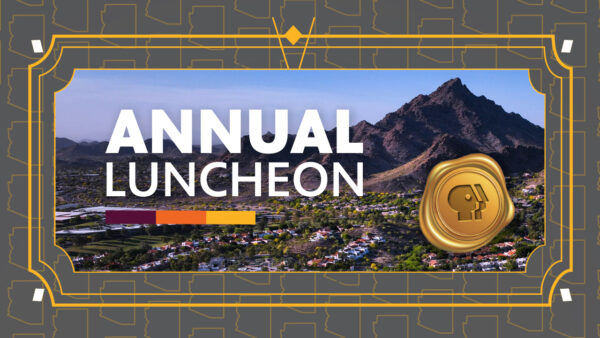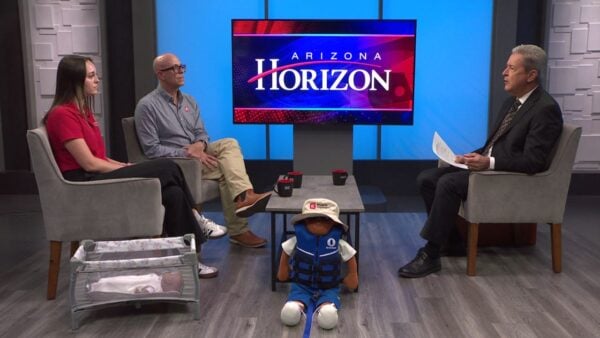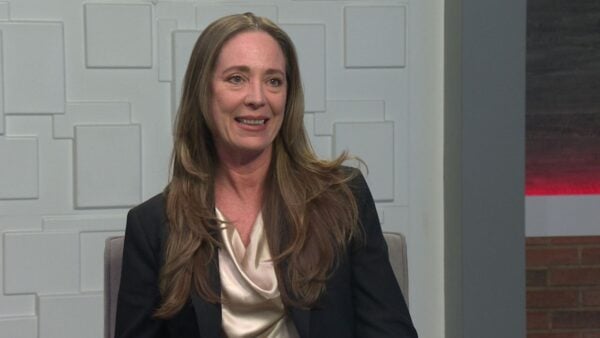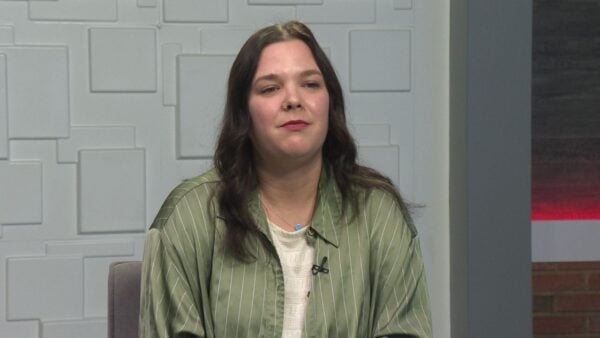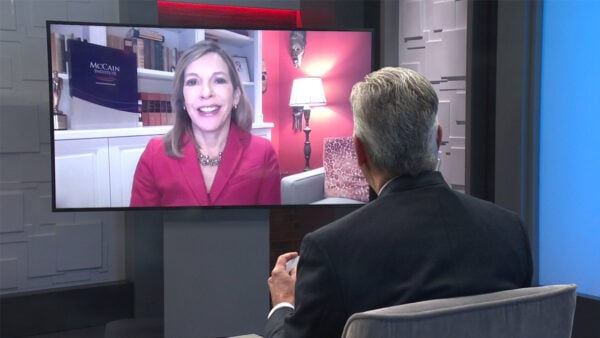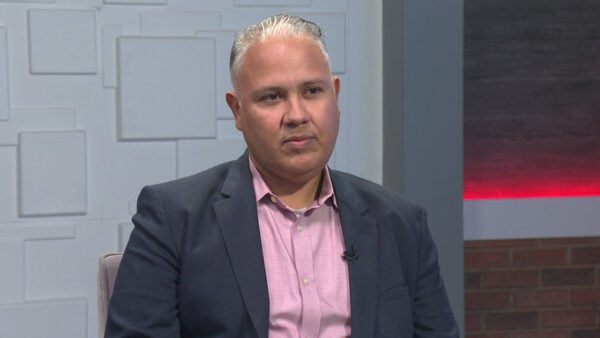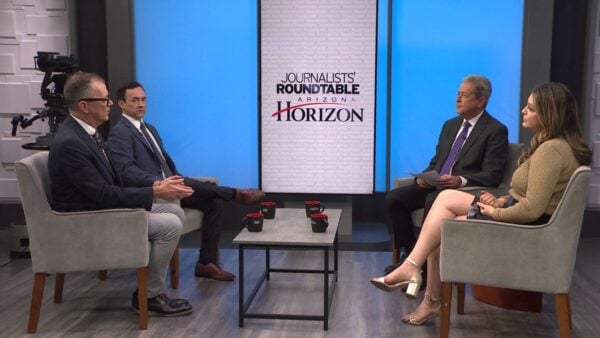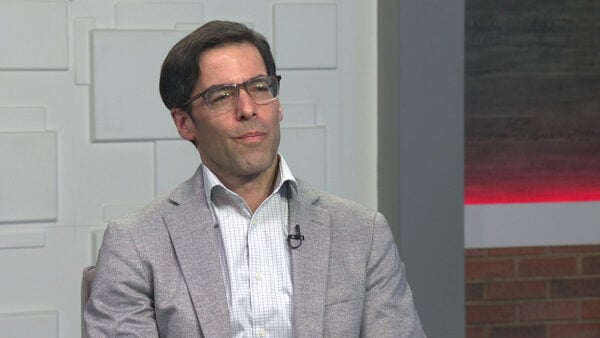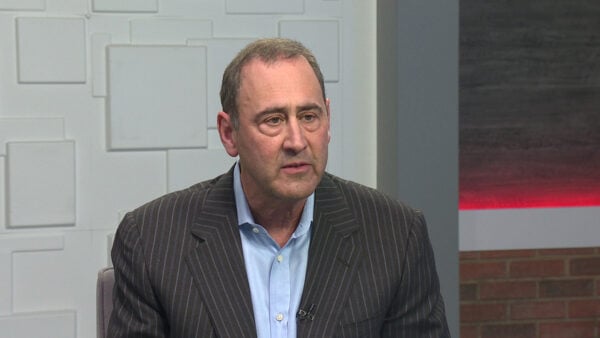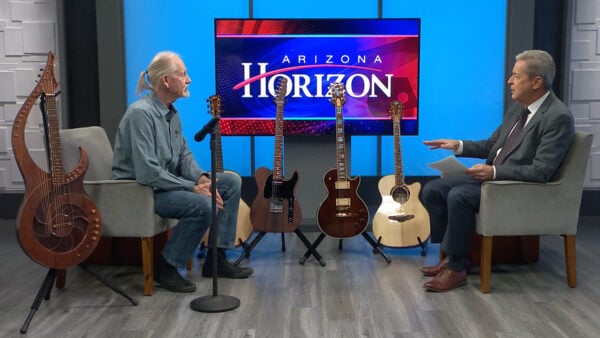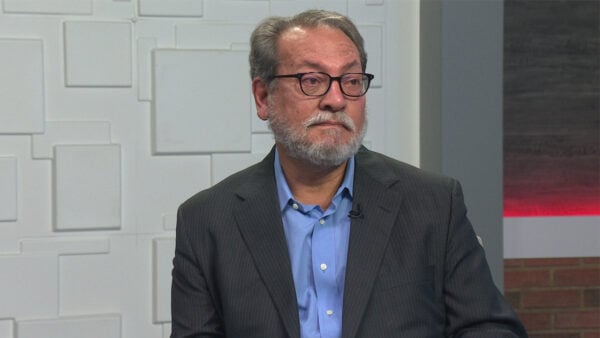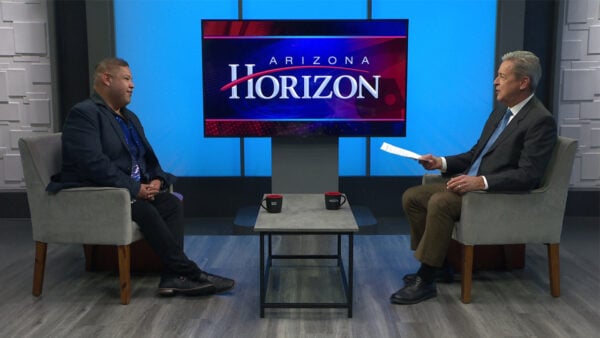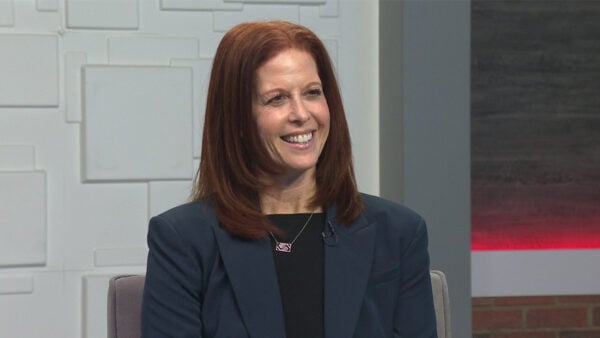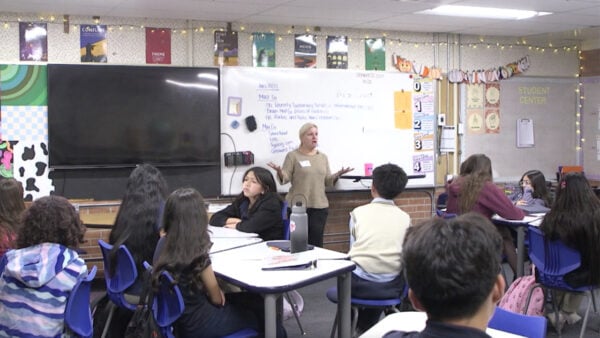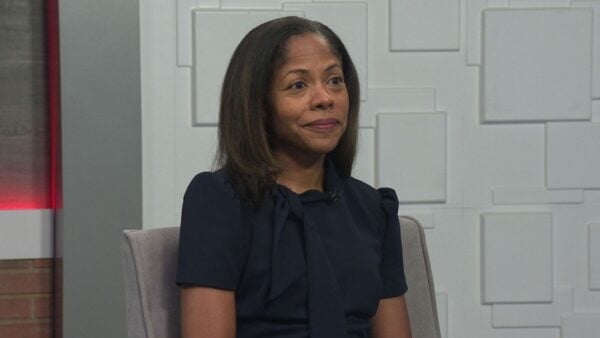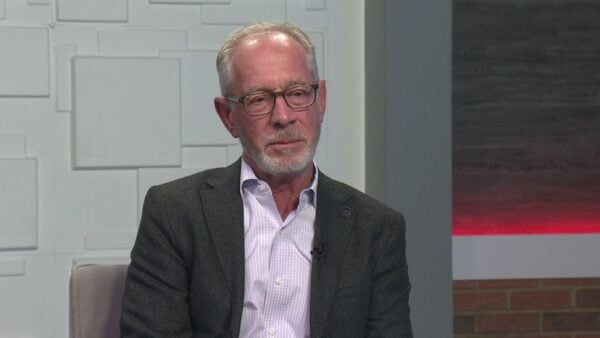Last Friday an unprecedented demonstration in Phoenix attracted tens of thousands of people to protest proposed immigration legislation. We’ll talk to one of the organizers, former gubernatorial candidate Alfredo Gutierrez about the demonstration.
Jose Cardenas:
Tonight on Horizon, an immigration demonstration in Phoenix draws thousands and surprises many across the country. We'll talk with one of the organizers of the march. A look back at the transforming American healthcare national symposium. And it's the city's mission to revitalize a south Phoenix historical community, the hope six project.
Announcer:
Horizon is made possible by contributions from the friends of 8, members of your Arizona PBS station. Thank you
Jose Cardenas:
Good evening and welcome to Horizon. I'm Jose Cardenas filling in for Michael Grant.
Jose Cardenas:
Reverberations are being felt nationwide after demonstrators took to the streets across the country to protest proposed immigration reforms. Protests continued today in California, Texas and Michigan. Saturday, 500,000 marched in L.A. Last Friday, Phoenix saw tens of thousands of marchers. The rally tied up traffic for hours. But was otherwise orderly and peaceful. Mike Sauceda tells us more.
Mike Sauceda:
It was a protest that caught everyone off guard, even the organizers of the event.
Elias Bermudez:
We apologized to the police department. We thanked them very much. But yes, people came out because people are really, really trying to find a solution to this problem. Because the solution has to be mutual. It doesn't lay just on the activists or on the people, it lays with the employers, the clergy, with everybody else.
Mike Sauceda:
The groups organizing the march say they told the city they were estimated about 3,000 marchers but it grew to about 20,000. Because of the first amendment right of assembly no permit is needed for protest. The rally was not advertised but was talked about on Spanish radio stations. That fed the crowd size.
Elias Bermudez:
I am filled with humility. Because finally the people are saying, we want to be part of this movement. We want to be part of the solution and we want to stop this wave of immigrant sentiment. We don't want to hurt anybody. We feed your children. We wash your clothes. We clean -- mow your lawns. We construct your homes. Why don't you want us? We are here to serve you.
Jose Cardenas:
Joining us now to talk about the march, one of the organizers, Alfredo Gutierrez. Welcome.
Alfredo Gutierrez:|
Thank you.
Jose Cardenas:
You were one of the organizers. How did this come about?
Alfredo Gutierrez:
There's been talk about coming together, bringing all the organizations together. Indeed there were over 16 organizations that took part in this. You saw various unions, no more borders, et cetera. They all came about with one thought in mind that we had to try and make an impact before the debate began in Washington. So that was with that thought in mind.
Jose Cardenas:
The debate on the pending legislation?
Alfredo Gutierrez:
That's correct, that began today. So we arranged to take a letter, six delegates take a letter to senator Kyle. And it was six delegates who went into his office with 30,000 of their closest friends. I mean, we organized a march around that. We think it was very impactful. It Was very moving to be there and to see this.
Jose Cardenas:
How did you get the word out?
Alfredo Gutierrez:
Primarily Spanish language radio. We also had these tiny little leaflets. Literally thousands of volunteers who were at every Mexican event handing them out at all kinds of venues, if you will, that Mexicans and Hispanics gather. But it was primarily radio. We also had the help of the Spanish language newspapers but they're weeklies, unfortunately for us. They couldn't do a daily story for us. But they covered it prior to the march with great coverage. The headlines, for example of one newspaper was, megamarcha convercada has been called. The English ignored this almost completely.
Jose Cardenas:
They seem to be taken by surprise.
Alfredo Gutierrez:
I think they were.
Jose Cardenas:
Was there any attempt to get this out to them as well?
Alfredo Gutierrez:
I suspect they focused primarily on Spanish language media. Because of past experience that, there's very little interest in the larger community over this. I must say that the "Arizona republic" of recent has been doing an extraordinary job of trying to cover the Hispanic community.
Jose Cardenas:
Now, do you think that perhaps lack of interest is a contributable to the fact that Phoenix has never seen even at the height of the Martin Luther King controversy demonstrations of this magnitude?
Alfredo Gutierrez:
I think that's part of it. I think the other part of it is that we are invisible. People go to work every day, and they're housekeepers and in hotels and in resorts and mowing lawns, building houses, they're on top of roofs. But somehow no one ever thinks about the fact that these people are undocumented and that we've arrived at this sinful alliance between business and workers to lie. I mean, obviously builders know those people on the roof are undocumented. But they go through the fix of filling out forms. And we've all lived there. So it becomes a very comfortable existence of deception. And most people don't understand the tremendous stress, the tremendous anger, the tremendous desire on the part of our folks to come out of these shadows and stop being invisible. So that's what I think what was shocking, that there were 30,000 people. And you saw them. There were children, babies, elderly people, willing to make this effort.
Jose Cardenas:
There were thousands of others in other cities across the country who also made the same effort.
Alfredo Gutierrez:
That's right.
Jose Cardenas:
Was there some kind of national coordination?
Alfredo Gutierrez:
Very little. There has been some national coordination, very little. The national coordination is for April 10. On April 10 we intend to do this again. And we hope it's substantially greater on April 10. We hope to have twice as many people as came out on Friday.
Jose Cardenas:
You used a figure of 30,000 which is at least 10,000 more than what's been reported in the media. How did you get your number?
Alfredo Gutierrez:
My number comes from two. One is the police estimated 20,000 or so to us. At the beginning of the march. The march kept on growing because there were so many people who couldn't approach the beginning because of traffic snarls. Who then joined us as we moved forward. We think there were thousands upon thousands. The other reason is that I stood at senator Kyle's office because we had some confusion when we made the turn there to come back. I stood there with other volunteers. I shook the hands of almost 10,000 people there. 20,000, 30,000 people. And I am convinced that wasn't 20,000 people. That was one heck of a lot of people.
Jose Cardenas:
Alfredo, tell us a little bit about the legislation that was the ostensibly target of the market.
Alfredo Gutierrez:
4437 criminalizes --
Jose Cardenas:
We're talking about a bill --
Alfredo Gutierrez:
In the House of Representatives. It makes a felony out of the status of being undocumented. It's currently a misdemeanor. Which means all those people are subject to immediate arrest by the police. Secondly, it makes a felony out of anyone who assists those people. That then puts into play all of their families. Because obviously people who are feeding them, helping them, transporting them, et cetera, become immediately felons as it does churches, social work agencies, et cetera. Because they too are providing service to these folks. So it would criminalize 50, 60 million people in America?
Jose Cardenas:
I understand some of the most offensive parts of the legislation were at least in the Senate were addressed there for example to decriminalize the actions of others in assisting people here without proper documentation. What else is happening?
Alfredo Gutierrez:
The hearings are still going on. As of this moment what we do know is that some of the worst aspects of 4437 have been refused by the senate judiciary committee. That bill known at ag-jobs which has been proposed by the united farm workers which legalizes 1.5 million farm workers in addition to that number, their families so we're talking about 4, 5 million people, that proposal was adopted as an amendment. But the committee is still deliberating and will be, we suspect, for a few weeks before we come to a response here. A final answer.
Jose Cardenas:
Alfredo, a lot of the publicity has been about the unhappiness of city officials, mayor Gordon in particular about the march. What can you tell us about that?
Alfredo Gutierrez:
Well, you know, it all got pretty silly there for a moment. With 30,000 people in the streets there. Were tremendous traffic snarls. There was a lot of people complaining. They were inconvenienced for two hours, perhaps three. And many of them called the mayor's office. And he appears to be very unhappy. I can only say this for the record. One, we had a permit. It wasn't necessary but we had one. That permit stated the route. So everyone knew we were going to senator Kyle's office. Two, we had insurance. Again not necessary but we obtained it in case some untoward event occurred. And three, at these sorts of events there are no rsvp's. There's no way for us to determine the number. Our estimate is as good as anyone. One of our volunteers made an estimate of 3,000. Grossly underestimated for what indeed occurred. But it certainly wasn't purposeful.
Jose Cardenas:
And we're going to have to leave it at that. Alfredo, thank you for joining us on Horizon.
Jose Cardenas:
On tomorrow night's Horizon we'll continue our discussion of the impact of the march with legislative leaders including updates of bills at the capitol.
Jose Cardenas:
Health officials from across the country gathered in Phoenix last week for the transforming American healthcare national symposium. Featured guests including senator Jon Kyl and former senator Bill Bradley. Participants discussed the many facets of the healthcare issue. Larry Lemmons takes a look at the impact of this year's conference.
Sanford Roth:
So the question therefore is if we want to target there --
Larry Lemmons:
Dr. Sanford Roth moderating one of the sessions at the national healthcare symposium. A number of healthcare professionals participated in transforming American healthcare over the next decade. It's a national symposium sponsored by ASU's W.P. Carry School of Business. The conference wrapped up before the weekend and organizers say a useful discussion came out of the experience.
Robert Mittelstaedt:
We've been talking about the changes that need to take place in the healthcare system for 30 years now and have done what many people would consider an awful lot in terms of how the system operates. But the reality is that most of those changes have been incremental. Big legislation that we had that changed the system dramatically was Medicare and Medicaid in the 60's. Since then we've had tremendous increases in technology. Very few increases in the efficiency and effectiveness of the way we operate the system. The interesting thing about this conference is for the first time in a long time I heard almost every single speaker talking about the fact that it's time we take control of this from the standpoint of the citizencitizenry taking control of it rather than waiting for government to take action.
Speaker:
The change we will see in the U.S. and in the world around healthcare and providing and delivering healthcare to individuals is going to be monumental change.
Larry Lemmons:
Several topics were covered at the conference, including issues involving information technology, litigation and regulation, and health savings accounts.
Robert Mittelstaedt:
We had a number of speakers that talked about the fact that we have to begin to experiment with things like hsa, health savings accounts. We need to understand that people have an innate understanding of economics even if they can't put it in an equation form or tell you exactly what the curve looks like. But they understand supply and demand and pricing in their own context, what they're willing to pay for, what they're not. So I would say one of the highlights is that I see rather broad endorsement for these new hsa's and other mechanisms which will put people more in control of their healthcare spending and at the same time not expose them to great risk.
Larry Lemmons:
Organizers say the idea of conferences like this is to encourage participants to take action.
Robert Mittelstaedt:
People will leave with the understanding that these things don't change unless individuals take action, and that action, whether it is through a corporate executive or people talking to their legislators if it's something that requires legislative action, whether it's groups or associations that band together like chambers of commerce or businesses or special interest groups of other types, we have to engage more people in the debate about how we run the system. It has been sort of running itself far too long.
Larry Lemmons:
The goal for next year's conference is to attract more diverse opinions.
Robert Mittelstaedt:
One of the important things about a conference like this is it brings together people from a variety of different places and organizations and views on subjects. It's nice that the W.P. Carry School of Business has been able to be the convener of such a conference and bring these sorts of people together. Our plan for next year is to try to set it up in an even broader format where we bring together some folks that we know aren't going to agree on the issues, where we know they're going to have very different opinions on it and perhaps even starkly different opinions. Because while this conference went smoothly from the standpoint of a lot of people agreeing on the direction we need to go, there are going to be people who won't agree on this. So we hope to make this an annual affair.
Jose Cardenas:
As millions of dollars are going torte revitalizing the city of Phoenix downtown areas so is additional funding for one of the city's oldest communities. The project is called Hope 6. The Hope 6 project uses federal dollars to redevelop public housing into mixed income communities. Nadine arroyo shows us more.
Nadine Arroyo:
The Matthew Henson apartments on 7th avenue and Tonto street just less than a mile from downtown Phoenix is being revitalized as a mixed income community under a new program called hope 6. It's a initiative supported by the housing and urban development. In 2001 Hud awarded Phoenix a grant to demolish the structures and rebuild deteriorating apartments.
Dee Wheeler-Cronin
Part of the greatness about the hope 6 program is that the intention is to go through, do a mixed income development. We do a holistic approach because we have a lot of community amenities in addition to rebuilding the public housing. We do a mixed income development which results in not only the public housing residents living here, which typically are the lowest of the low on the income scale, we also have our middle income units, tax credit units and market rate units.
Nadine Arroyo:
Under the program the hope 6 project will consist of more than 600 live-in units, a youth center, a community training and education center and a public park with a swimming pool.
Dee Wheeler-Cronin
We build a quality development that could rival any other development in the entire city or in the state.
Nadine Arroyo:
The new community is geared toward providing a safe and clean community for mixed income residents. The new dwellings will be home for many low income residents for families already living in the community as well as homes provided at market rate for newcomers.
Dee Wheeler-Cronin
The question in the very beginning was, how are you going to attract people to an area like this? You start working slowly, you work with the people in the community, you show them and get them input into what we're building here. The townhouses that you see, this was a direct result of community input.
Nadine Arroyo:
The development is in its second phase. Nearly 200 dwellings have been built. Overall completion is scheduled for 2008.
Jose Cardenas:
Joining us tonight to talk about the hope 6 project is Dee Wheeler Cronin, Hope 6 project manager for the city of Phoenix, and David , he is vice president for the Arizona developer, which are instrumental in the project. Dee, David, thank you for joining us on Horizon.
Jose Cardenas:
Dee, I want to talk about the specifics of the program you but let's start fist with the total. Hope 6. What do those two words mean?
Dee Wheeler-Cronin
Hope is actually an acronym, and it means, home ownership opportunities for people everywhere. And the roman numeral 6 is part of the rounds of funding since the program started back in the early 90's.
Jose Cardenas:
this is a federal program?
Dee Wheeler-Cronin
Yes it is.
Jose Cardenas:
Explain the details to us.
Dee Wheeler-Cronin
Basically it was designed to come into areas across the country where public housing had been so severely distressed it, was aged and there were a lot of problems with the public housing, maintaining the public housing. So it was designed to bring about a revitalization in areas that are typically very low income, in the urban cores. So you find a lot of public housing in the city of Phoenix around our downtown core. So the program was designed to go in, take down some of the old, dilapidated, distressed public housing and then replace it with new quality housing with community input and create a mixed income development that will attract all levels of income to the area and help the revitalization process start. It is not only about community revitalization but also about creating economic and educational opportunities.
Jose Cardenas:
David, Dee has indicated it's a nationwide program. Tell us about baron McCormick Salazar's involvement.
David Adame:
Yes, we've been in business since the 1970s. And this particular project is our 13th of 16th hope 6 project we've been involved with across the country. We've done them in Los Angeles, Saint Louis and we have a lot of experience of taking these public housing units and mixing the incomes. Very successful in doing that. I think it acts as a great economic development tool so that you can revitalize these communities, start to attract some other private investment such as McCormick Baron Salazar, other companies will start to do grocery stores and normal retail that normally has avoided these areas because there's been such a concentration of poor individual and poor families. So now we're bringing in this mixed income ideal where you have the market rate component, you have the middle income so now when they do the studies to brings in a grocery store and other retail outlets there's that support for that because there's that income mix in these communities.
Jose Cardenas:
Dee, as David indicated, they've been doing this a long time over the country. How did Phoenix get involved?
Dee Wheeler-Cronin
Well, we actually went for the community. This is a community-driven process. And when Phoenix went forward to apply for the hope 6 grant it was the people in the center city south community that urged and encouraged us to do that. So we submitted the application at their urging. They helped us pull together all of the community input factors that we needed to make it a viable application. And that's how we went forward with the support from the community.
Jose Cardenas:
Any particular significance that this is the Matthew Henson project?
Dee Wheeler-Cronin
Well, I tell you. First of all of all the public housing sites that the city of Phoenix housing department manages, Matthew Henson was one of the oldest. It was built in 1939 and the first residents started moving in 1940. From either historic significance is that it is the first predominantly African-American community that was established in the Phoenix area back in 1940. So a lot of great, wonderful history that resides as a part of this community. And we are very fortunate that we do, as a part of the grant, we are required to make sure that we honor that history. So we are doing that in various ways as far as working with the state historic preservation office, the youth council for the kids. So it is very historically significant from that perspective. A lot of very famous people came out of Matthew Henson.
Jose Cardenas:
Give us a few.
Dee Wheeler-Cronin:
Art Hamilton is one. Everyone knows that he was a past state legislator.
Jose Cardenas:
One of the most influential in the state.
Dee Wheeler-Cronin
Yes. And he's been very support supportive of what we're doing out there and he did a nice narration for us for a program that we did to talk about the historical significance of the area.
Jose Cardenas:
David, you and I have talked about this particular project in the past and it has some particular significance for you as well.
David Adame:
Definitely. This is the community that I grew up down the street from. I went to grade school with some folks that lived in Matthew Henson. And what's exciting about this is that we're seeing the rebirth of this community. It's a great community with some great people, as Dee alluded to, great, rich culture of history and heritage. The idea it's close to downtown. I remember as a youth growing up in the area, downtown was actually alive downtown that had plenty of shopping and thing to do downtown. So I'm excited about this area coming back. The revitalization I think it is going to be a great as set for the community and the downtown. The bond election was successful.
Jose Cardenas:
Since we talked there have been some changes. That is one of them. What is the tie in between these two?
David Adame:
The tie in is all this excitement with the new civic plaza all this technology coming in, the medical community with the second medical school going in, with the ASU downtown, that's a lot of people coming back into downtown to work. But we have to keep in mind that not everybody is going to be the professor or the scientist or everything else. We need -- these work force also need some housings so they can take advantage of those jobs and live close to downtown, not having to come from the edge.
Jose Cardenas:
Let's talk about the allocation between low and medium income families in the project.
Dee Wheeler-Cronin
Well, we are totally building as far as hope 6, 611 units. We are doing a one for one replacement of the public housing units which were 372. When we mix up the incomes you have at least 372 units that will be for those returning residents, the residents that decided they wanted to come back, they had first priority to return. Then we had those units based on the mid level income to the market rate income. Mid level income meaning that those are the tax credit units where people cannot actually make more than 60% of whatever the area median income is for that area. Then of course the market rate. These are folks that can go anywhere in the valley and identify whatever housing they like. About 60/40. 60% the public housing replacement units.
Jose Cardenas:
We're going to have to wrap it up there. Thank you for joining us on Horizon. Much appreciated.
Merry Lucero:
Arizona lawmakers are working at the state capitol on issues such as immigration, the state budget and English language learning. Legislative leaders join us for an update. Plus tax time is nearing. We'll get an update on E. Filing and new tax laws and tell you about some new tax scams to look for. Those stories Tuesday at 7 on Horizon.
Jose Cardenas:
Wednesday we'll look at efforts to make English the official language of Arizona. Thursday we'll examine why some schools with Latino children beat the odds and why others don't. Friday join us for the Journalists roundtable. That's Horizon for tonight. I'm Jose Cardenas. Enjoy the rest of your evening. ¶¶[music]¶¶
Announcer:
If you have comments about Horizon, please contact us at the addresses listed on your screen. Your name and comments may be used on a future edition of Horizon.
Alfredo Gutierrez:march organizer;Dee Wheeler Cronin:Hope 6 project manager, City of Phoenix;David Adame:vice president, Arizona developer;
